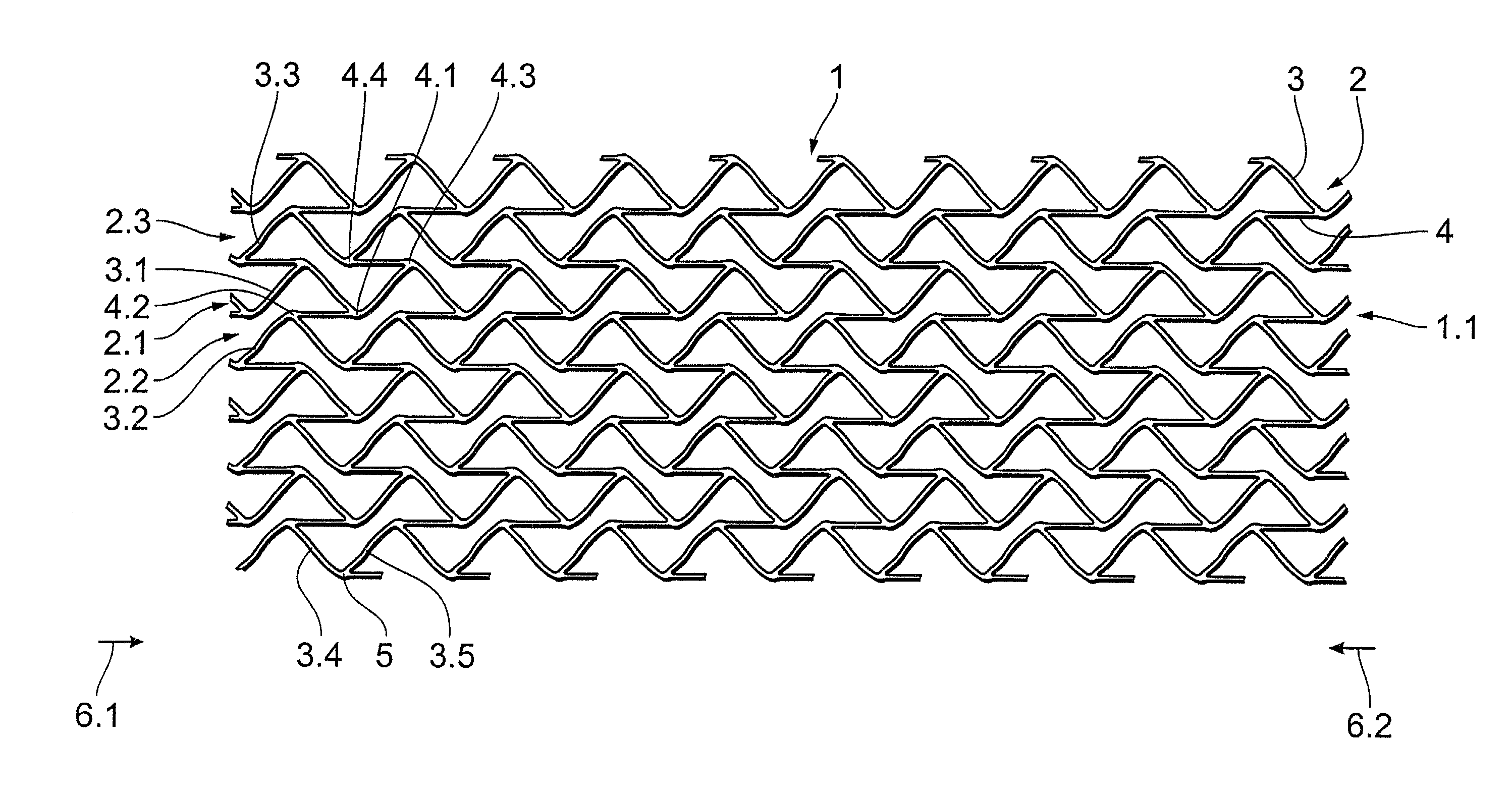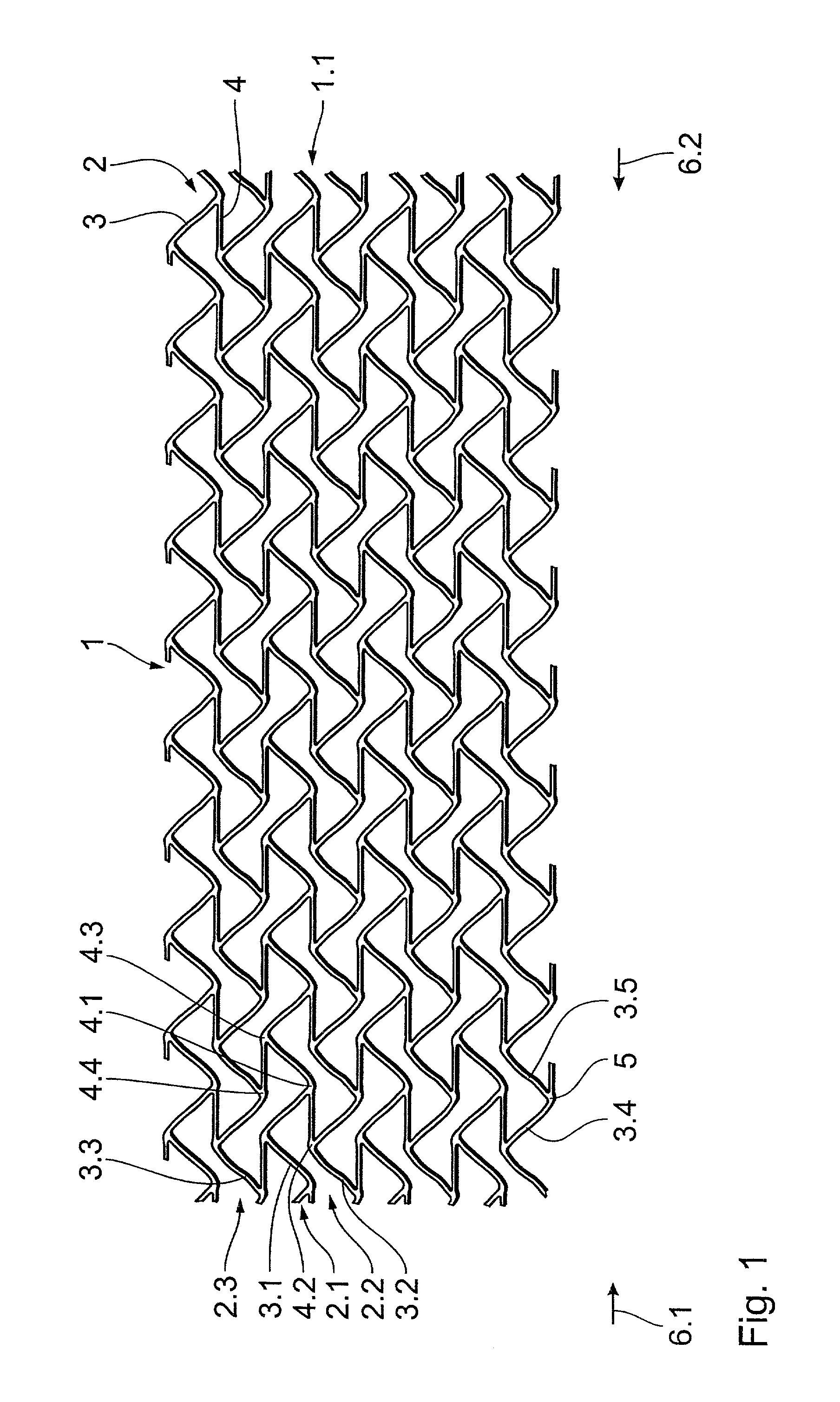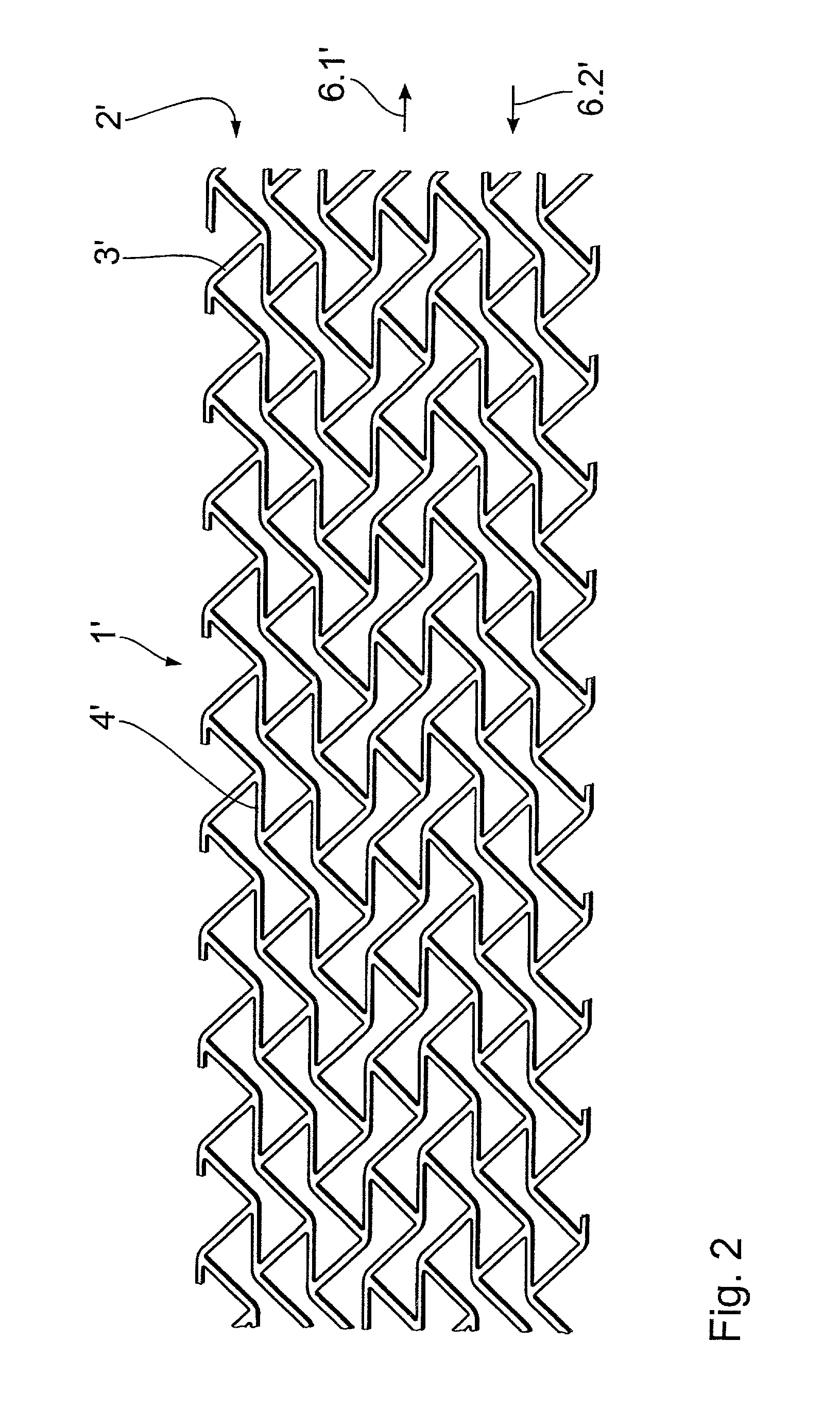Stent
a technology of stents and catheters, applied in the field of stents, can solve the problems of considerable loading on the blood vessel, shortening in length to a relatively great degree, etc., and achieve the effect of reducing the length reduction upon expansion
- Summary
- Abstract
- Description
- Claims
- Application Information
AI Technical Summary
Benefits of technology
Problems solved by technology
Method used
Image
Examples
Embodiment Construction
[0025]FIG. 1 is a plan view of the development of the peripheral surface 1 of a preferred embodiment of the stent according to the invention, with support portions 2 formed by bar elements 3 extending in a meander configuration in the longitudinal direction of the stent. Those bar elements 3 are connected together in the peripheral direction of the stent by way of first connecting bars 4.
[0026]The stent has support portion groups 1.1 with a first support portion 2.1 and a second support portion 2.2 which is in adjacent relationship therewith in the peripheral direction, wherein the first engagement points 4.1 engage the first bar elements 3.1 of the first support portions 2.1 and the second engagement points 4.2 of the connecting bars 4 engage the second bar elements 3.2 of the second support portions 2.2. The connecting bars 4 each engage a respective reversal or turning point 5 of the bar element 3.
[0027]The connecting bars 4 extend rectilinearly in the longitudinal direction of t...
PUM
 Login to View More
Login to View More Abstract
Description
Claims
Application Information
 Login to View More
Login to View More - R&D
- Intellectual Property
- Life Sciences
- Materials
- Tech Scout
- Unparalleled Data Quality
- Higher Quality Content
- 60% Fewer Hallucinations
Browse by: Latest US Patents, China's latest patents, Technical Efficacy Thesaurus, Application Domain, Technology Topic, Popular Technical Reports.
© 2025 PatSnap. All rights reserved.Legal|Privacy policy|Modern Slavery Act Transparency Statement|Sitemap|About US| Contact US: help@patsnap.com



